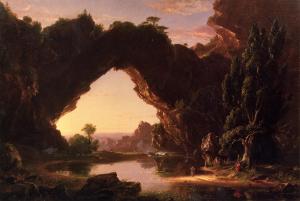Arcadia – a region of ancient Greece that is “a poetic byword for an idyllic vision of unspoiled wilderness.” ~Wikipedia
Two weeks ago, Arcadian Tone Poems, a piece for tenor saxophone and orchestra was premiered. It is always an exciting event, to attend the public “unveiling” of something created in the privacy of my studio. A composition never seems complete until it is performed, and what a performance! Our marvelous Duquesne University Symphony Orchestra played with verve and skill under the direction of Jeffrey Turner and, as you will hear, James Houlik’s performance on saxophone is that of a master.
I was asked by the director to create something fun and accessible, with lots of variety in mood and tone color and to showcase the artistry of James, an extraordinary master of the classical tenor saxophone. Immediately the idea of writing a suite of tone poems came to mind, the perfect medium in which to explore the tonal colors of the saxophone and orchestra.
Tone poems, or symphonic poems, arose as a musical form in the 19th century Romantic era of music, and are “intended to inspire listeners to imagine or consider scenes, images, specific ideas or moods.” When searching for a way to feature the classical saxophone in an imaginary landscape, the idea of a pipe or horn being played in the wilderness suggested the role of the shepherd moving through the landscape and describing its beauty through music. “Arcadia is associated with bountiful natural splendor, harmony, and is often inhabited by shepherds” and so the idea for a suite of four tone poems was born.
The program notes from the premiere:
Written to showcase the saxophone artistry of virtuoso James Houlik, “Arcadian Tone Poems” is a series of aural impressions of the mythic land of Arcadia. Ancient Greeks envisioned a pastoral paradise of hills and valleys, mountains, streams, and forests, populated by the ancient gods. Imagine a contest of aerial acrobatics between birds over a meadow strewn with flowers, or a broad flowing river rushing through the mountains, carrying water sprites on the foam. Perhaps Pan, the ruler of Arcadia, is playing a haunting melody deep in a cathedral forest punctuated by columns of light, or Zeus and his sons amuse themselves with a dramatic game of throwing thunderbolts across the hills. Each movement is meant to be an imaginary stroll through a different aspect of this ancient paradise.
Here’s a montage of selections from each movement of Arcadian Tone Poems
Here is an audio file of the complete third movement, “Shadow and Light” (©2013 Lynn Emberg Purse)
A special thanks to my husband, Bill Purse, for his formidable skills as audio engineer and producer in the process of mixing and mastering the concert recording.
Read more about the creation of Arcadian Tone Poems in Playing With Thunder.


